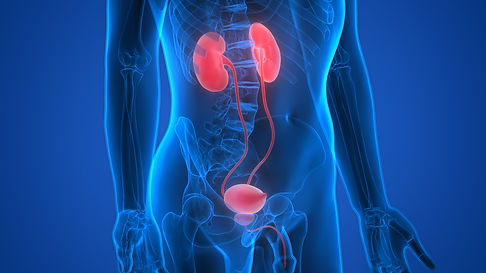.png)
Services
Providing Everything You Need

Ureterorenoscopy
One of the specialized procedures I perform is ureterorenoscopy.
This is a minimally invasive technique used to diagnose and treat problems in the ureter and kidney, such as stones, strictures, or tumors. During the procedure, I insert a thin, flexible scope through the urethra and bladder to reach the ureter and kidney.
It's a precise and effective way to manage urinary tract conditions with minimal recovery time for the patient.
Laser Lithotripsy
I also perform laser lithotripsy, a highly effective procedure used to treat kidney and ureteral stones. Using a small scope inserted through the urinary tract, I guide a laser fiber directly to the stone. The laser breaks the stone into tiny fragments, which can then be removed or passed naturally through the urine. It's a safe, minimally invasive option that allows for precise treatment with minimal discomfort and quicker recovery compared to traditional surgery.


Percutaneous Nephrolithotomy
I perform percutaneous nephrolithotomy (PCNL) for patients with large or complex kidney stones that can't be treated effectively with less invasive methods. This procedure involves making a small incision in the back to create a direct pathway into the kidney. Through this channel, I use specialized instruments to break up and remove the stones. PCNL is highly effective for treating large stone burdens and offers a faster recovery and better outcomes compared to open surgery. It's typically done under general anesthesia and requires a short hospital stay.
Cystolithalipexy
I perform cystolitholapaxy to treat bladder stones. This is a minimally invasive procedure where I insert a cystoscope through the urethra into the bladder to locate the stone. Using specialized instruments or a laser, I break the stone into smaller pieces and then flush or remove them from the bladder. It's a safe and effective way to relieve symptoms like pain, frequent urination, or urinary obstruction caused by bladder stones, and it usually allows for a quick recovery with minimal discomfort.


Transurethral Resection Of The Prostate (TURP)
I perform transurethral resection of the prostate (TURP) to treat men with urinary symptoms caused by an enlarged prostate, a condition known as benign prostatic hyperplasia (BPH). During this procedure, I insert a special instrument called a resectoscope through the urethra to reach the prostate. Using an electrical loop, I carefully remove excess prostate tissue that is blocking urine flow. TURP is considered the gold standard for relieving urinary obstruction and improving quality of life, and it typically involves a short hospital stay with significant symptom relief.